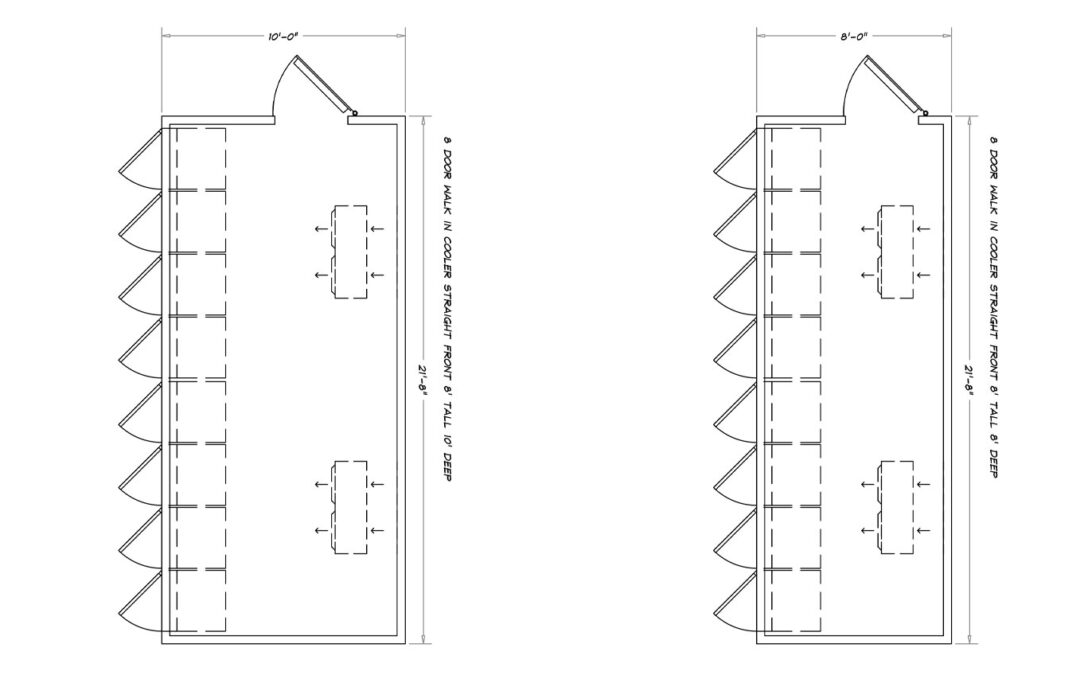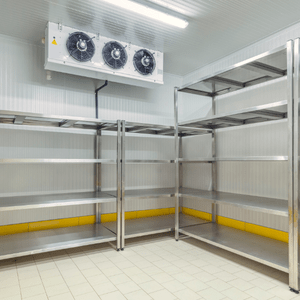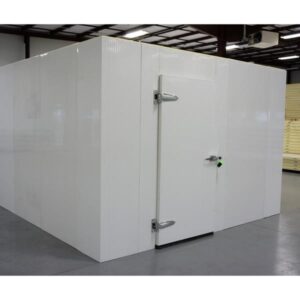For restaurateurs, chefs, and food service providers, efficient storage solutions are crucial to maintaining food quality and operational success. Many often wonder if a walk-in cooler can serve a dual purpose—functioning as both a refrigeration and freezing unit. Unfortunately, the answer is no. Walk-in coolers and walk-in freezers are engineered with distinct specifications tailored to their purposes. Attempting to combine these functionalities in one unit can compromise efficiency, safety, and even lead to costly repairs.
Below, we’ll explore why a walk-in cooler cannot serve as both a refrigerator and freezer. Additionally, we’ll discuss possible alternatives, such as implementing a demising wall to achieve separate compartments for cooling and freezing in the same space.
The Science Behind Refrigeration and Freezing
To understand why a walk-in cooler cannot function as both a refrigerator and a freezer, we need to consider the scientific principles that underlie refrigeration and freezing.
Refrigeration is designed to keep perishable items, such as dairy, fruits, and vegetables, cool but not frozen. Typically, refrigeration units are set to operate within a temperature range of 35°F to 38°F, which slows bacterial growth while keeping items fresh.
Freezing, by contrast, is intended to halt microbial activity entirely by bringing temperatures down to -10°F to 0°F. This is vital for long-term storage of meats, seafood, or any items meant to retain their quality for a prolonged period.
The vital difference in temperature requirements is just one of the many reasons why a single walk-in unit cannot effectively serve both purposes.
Key Differences Between Walk-In Coolers and Freezers
Walk-in coolers and walk-in freezers are not interchangeable. Each is carefully designed with specific technical features that cater to different temperature demands:
1. Operating Temperatures
- Walk-In Cooler
Walk-in coolers operate at temperatures between 35°F and 38°F, ideal for preserving fresh goods without freezing them.
- Walk-In Freezer
Walk-in freezers maintain much lower temperatures, typically ranging between -10°F and 0°F, to ensure items remain frozen solid.
2. Wall Thickness
The structural design of the walls in each unit is tailored to accommodate the respective temperature requirements:
- Walk-In Cooler Walls
Coolers typically feature 4-inch-thick polyurethane or polystyrene walls, providing ample insulation for moderate refrigeration needs.
- Walk-In Freezer Walls
Freezer walls are 5.5 inches thick, offering significantly higher insulation to maintain ultra-low temperatures and reduce energy loss.
3. Flooring Requirements
- Walk-In Cooler Floors
Most walk-in coolers do not require insulated flooring. This is because the temperature difference between the inside of the cooler and the surrounding environment is not extreme.
- Walk-In Freezer Floors
Freezers, on the other hand, necessitate insulated and heated floors to prevent frost heave—a phenomenon where moisture in the subfloor freezes and expands, causing structural damage.
4. Defrost Systems
Condensation can build up on cooling coils over time, necessitating defrost mechanisms to maintain efficiency:
- Cooler Units
Walk-in coolers typically feature air defrost systems, which use ambient air to melt accumulated ice during the defrost cycle.
- Freezer Units
Freezers require electric defrost systems, which are engineered to handle the more significant ice buildup caused by the lower temperatures.
5. Door Seals and Hardware
Freezers feature heavy-duty door seals and hardware to prevent frost and ice buildup around entry points, while cooler doors are less insulated but still provide adequate temperature control.
Why Dual Functionality Isn’t Feasible
Given these design disparities, attempting to operate a walk-in cooler as both a refrigeration and freezing unit would create several problems:
- Compromised Insulation
The insulation in cooler walls and flooring cannot handle the extreme cold required for freezing, leading to energy inefficiencies and potential structural damage.
- Temperature Instability
Switching between refrigeration and freezing temperatures can cause fluctuations that risk food spoilage or damage to sensitive goods.
- Higher Maintenance Costs
The incompatible features, such as defrost systems and flooring, would necessitate frequent repairs, ultimately costing more than investing in separate units.
A Practical Alternative: The Demising Wall Solution
For businesses requiring both refrigeration and freezing within a single footprint, a demising wall offers a practical solution. This design divides one walk-in unit into two distinct compartments, allowing each side to operate independently with its own temperature settings.
Benefits of a Demising Wall
- Space Efficiency
Dividing a single walk-in unit helps optimize space, especially in smaller kitchens or storage facilities.
- Energy Savings
Each compartment’s insulation and systems are tailored to its respective purpose, reducing energy waste.
- Versatility
A demising wall gives you the flexibility to simultaneously refrigerate and freeze different items within one structure.
Additional Considerations for Walk-In Storage
Business-Specific Needs
Before finalizing your walk-in storage investment, assess your business’s unique needs:
- Are you primarily storing fresh produce and dairy, or will frozen goods be a core component of your inventory?
- How much storage capacity will you require for each temperature zone?
Regulatory Compliance
Ensure your walk-in configuration complies with food safety regulations set forth by agencies such as the FDA or USDA, particularly regarding temperature control standards.
Professional Consultation
Work with a reputable supplier to customize a solution that meets your exact requirements. Consulting experienced professionals can save you from the pitfalls of an inadequately designed system.
Optimizing Your Storage Setup
The key takeaway for restaurateurs, chefs, and food service providers is that walk-in coolers and freezers serve fundamentally distinct purposes and cannot be substituted for one another. While a dual-purpose unit is not feasible, alternatives such as a demising wall provide a smart, cost-effective way to meet your diverse storage needs without compromising efficiency or food quality.
For businesses ready to optimize their storage setup, investing in high-quality, tailored solutions will ensure long-term success and operational peace of mind.



